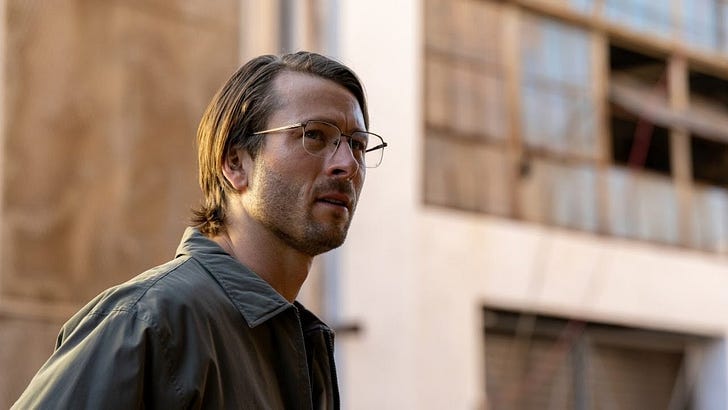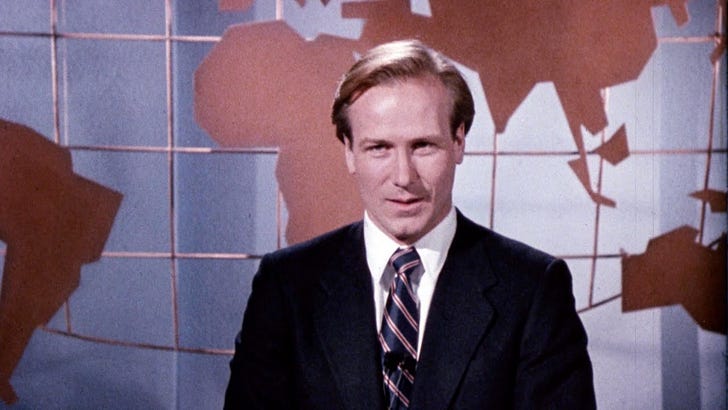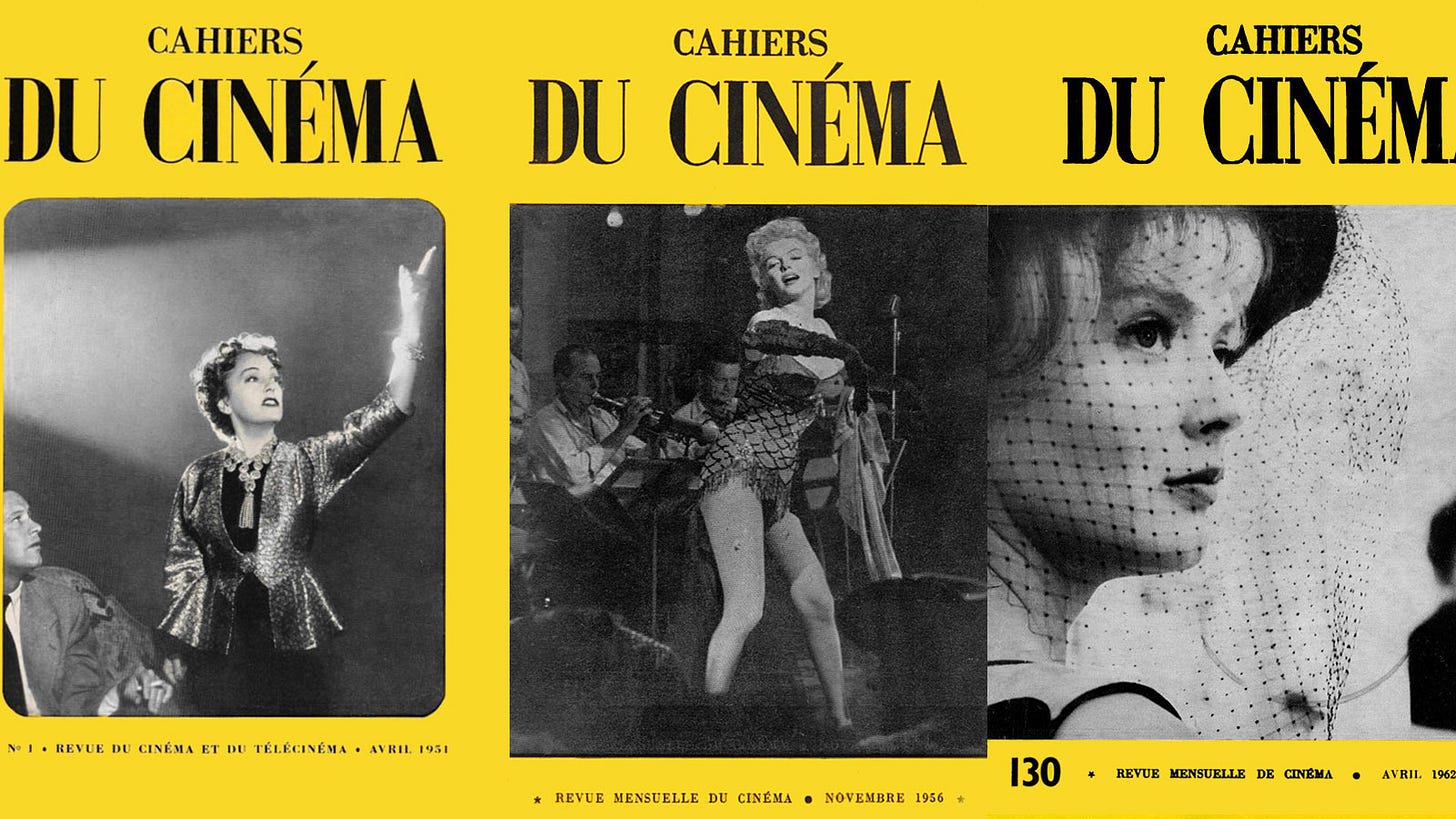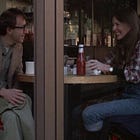It started, as these things often do, with a tweet. (We’re not updating our lexicon for Elon.)
She inspired the 2023 newsletter around the concept of “Too Hot To Trust”…
…and writer Lauren Wilford coined another term that deserves unpacking and dissecting: the “mid masterpiece.”
As one writer pointed out in the replies, this is to some extent what movies used to be when the studio system was at its height. Directors could make entire careers out of directing adult-centered entertainment that didn’t have grand ambitions beyond a nice night at the theater. And with a greater supply of movies came increased chances for directors to make them, reducing their need to make a “statement” or “calling card” movie.
But I think the Mid Masterpiece is more than just a holdover from a bygone era of moviemaking. In many ways, I’d argue that a director capable of making a Mid Masterpiece is the truest of talents!
Despite what people on r/movies and Film Twitter might have you think, the “auteur” theory is not a way to valorize directors with obvious signatures like Wes Anderson or Quentin Tarantino. It’s a method of spotlight the value of movies that do not loudly trumpet their maker's mark. The true auteurist works are Mid Masterpieces, not The Royal Tenenbaums or Pulp Fiction. (Both of which I love!)
The French film magazine Cahiers du Cinéma popularized this now-dominant style of film taxonomy and used it to spotlight then-disregarded American directors like Howard Hawks, Alfred Hitchcock, and John Ford. These directors, this group of French critics-turned-filmmakers argued, could elevate factory-produced scripts into real art through their participation. While their signature might be written in invisible ink, it’s still detectable for those trained by this auteurist way of seeing to look for it.
To build on Wilford’s concept, the Mid Masterpiece is the true embodiment of the auteurist ideal. It’s a film that you can easily imagine as being bland in the hands of someone without an artistic style or sensibility. It’s competent yet confident. The Mid Masterpiece is deliberately minor, like a B-side that supplements — and maybe even supplants — its more openly ambitious counterpart. It prioritizes fun and entertainment over intellect and innovation, but the Mid Masterpiece is easy to read through the lens of the defining themes from its director’s body of work.
Naturally, this brings to me Richard Linklater’s Hit Man, which is now playing in select theaters ahead of its global June 7 release on Netflix. After three watches, it is still my favorite movie of 2024. (So, very much not mid in quality!)
I had the honor of interviewing Linklater recently about Hit Man, and I think my line of questioning somewhat inadvertently veered into the territory of talking about the Mid Masterpiece. I asked if a saying in the film’s final scene had any relation to a similar quote in his masterpiece Boyhood, to which he responded: “I think they can’t help but reflect each other. I feel like the movies, strung together, are some kind of conversation, if you want to think of it that way. I think Hit Man is a little bit of an update.”
Do I hold this movie in as high regard as soaring masterpieces like Dazed and Confused, the Before trilogy, or Boyhood? No, but I also don’t think it’s trying to reach those heights — and I think that is fine! If Linklater wants to have some fun with a trusted collaborator while also gently weaving in his pet themes of identity and the construction of the self, great!
I don’t need every Linklater movie to deliver a grand address on existentialism to earn its keep. I greatly enjoyed watching him do a variation on something familiar, and we should want more directors to make movies like this Mid Masterpiece.
Back in the old studio days, because directors were cranking out movies — usually that they didn’t write — they learned how to smuggle their personality in far more interesting ways. Because people used to go to “the movies” rather than just “a movie,” there was less pressure for each one to earn its worth in such an existential way. There are fewer Mid Masterpieces because far too many filmmakers approach each project like it could be the last thing they ever make. I get it, but it’s exhausting!
Mid Masterpieces still get made, of course, and I’ve rounded up another 10 films that deliver somewhat conventional entertainment in packages far more interesting than they have any right to be. You may notice a theme in who’s behind the camera: older white men who came up in a system that did not make enough room for other voices. There’s one Black director, one female director, and one queer director in this list of Mid Masterpieces because they represent the designated “one” who could get through the cracks. May this list be an opportunity to reflect on the need for greater opportunity in the film industry to simply be themselves — mid and masterful!
Bridge of Spies, Apple TV+ (but expiring today!) and available to rent from select digital platforms
“Oh, another Spielberg and Tom Hanks movie about history with the righteous white male savior coming to solve everything,” you might think from the marketing for Bridge of Spies. Wrong! There’s a fascinating clash of sensibilities on display here from the notoriously sentimental Spielberg directing a script written by the sardonic Coen Brothers. That collision manifests most noticeably in Hanks’ James Donovan, a lawyer tasked with providing representation for an accused Soviet spy. Thanks to his quippy client, Donovan’s instinct to uphold institutions in theory receives quite the challenge in practice. It’s a slice of Americana that shows the country paradoxically at its best when forced to confront what’s worst (or, at the very least, most challenging to defend).
Dark Waters, Netflix
Todd Haynes, director of such vibrant works such as Velvet Goldmine and May December (not to mention queer classics like Poison and Far from Heaven), turned many heads when he signed onto this straight-laced legal drama. Given star Mark Ruffalo’s outspoken environmental activism, Dark Waters seemed more like a vehicle for the actor’s personality. But look past the muted color palette and the occasional bout of Ruffalo’s histrionics to see a paranoid tale of environmental illness that makes a fascinating compliment to his semi-allegorical AIDS thriller, 1995’s [SAFE]. It’s hard to spot a note that’s off from Haynes’ direction in the film, even if fans of the director might find it disorienting to hear him playing in such a different key.
The Departed, available to rent from various digital platforms
Yes, Scorsese can make a Mid Masterpiece! The movie that I gave the silver medal among the greatest Best Picture winners ever deserves this distinction.
Heck, my description last year practically said as much:
“The people who tell you The Departed is just the make-up Oscar for three decades of snubbing Scorsese are WRONG. Though the director himself is even inclined to express surprise that this is the film that finally got him over the hump with the Academy, it’s for precisely that reason the film stands as such a testament to his talents. There’s a version of this tale of mob/police double agents (a remake of an acclaimed Hong Kong thriller, to boot) that is standard director-for-hire material. But there’s something intangible that Scorsese brings to the mix here that elevates the story by imbuing it with his pet themes: the thin line between law and disorder, absent fathers and lost sons, intergenerational struggle, the contradictions of masculinity. The Departed is a thrilling tribute to Scorsese’s consummate craftsmanship and sublime stewardship of any project he touches.”
The Hateful Eight, Paramount+
It’s now taken on a slightly anomalous status in Tarantino’s canon, but I remain convinced time will come around on The Hateful Eight. Sure, it bears his usual stamps of expressive language, scrambled chronology, and unapologetic gore. But his take on the Western with a bit of Agatha Christie “whodunit” energy moves away from Tarantino’s favored postmodern pastiche in favor of a more classical vibe. I would never accuse him of being — gasp! — sincere, but this comes decently close! The Hateful Eight might feel like playing it safe, but I think Tarantino is taking quite the risk by trying to emulate a Spaghetti Western (complete with its own new Ennio Morricone score!) rather than just imitate one.
Inside Man, Netflix
Yeah, it’s no Do the Right Thing, but Spike Lee offers an intriguing portrait of New York racial and ethnic relations all the same in his heist thriller Inside Man. These tensions are not the foregrounded of the film as they are in his 1989 classic, yet Lee shows they don’t have to be a film’s subject to be present and palpable. A general sense of unease and mistrust permeates the diverse cast of characters in Inside Man, be they the rainbow coalition of hostages taken by the robber, the multiracial police negotiation team, or the lily-white moneyed class who takes a special interest in what might be stolen from the vault. Maybe it’s not a necessary layer to the events of the plot themselves, but Lee insisting this backdrop be there gives the film an added layer of sophistication that quietly ratchets up the overall tension.
The Intern, Max
I am once again here to tell you that the Nancy Meyers movie you write off as just “Pinterest vibes” is actually a genius commentary on gender and labor. I wrote an entire piece two years ago attempting to reclaim The Intern from the #GIRLBOSS era that unfairly judged it for allegedly embodying the cultural trends it quietly critiques. “While the workplace comedy received a largely pleasant reception from critics and audiences in 2015,” I wrote, “Commentary and chatter around the film that prioritized ideological interpretation over aesthetic analysis tarnished its reputation.” I will not back down, and I will win on this movie.
Joy, Max
I understand the impulse to write off Joy as David O. Russell’s misbegotten, not Mid, masterpiece. Following the awards and box office success of American Hustle, the follow-up from a resurgent director was eagerly anticipated … and then immediately discarded as a messy movie. I think that feeling is part of the design, not a mistake. “He always knew we’d be doing a lot of the story writing in the editing phase, more than you might normally do,” one of the film’s four credited editors told me, “But he always had a clear picture of what emotions he wanted to get across.” I liken Joy to Phil Spector’s Wall of Sound music style: it blasts you in the face with its earnestness. Then, it dares you not to be rattled by a film so willing to embody the circuitous, turbulent path to business success faced by an outsider like Jennifer Lawrence’s Joy Mangano. While it’s not as personal as his “self-reinvention” trilogy, it’s just as personable.
The Killer, Netflix'
“A movie is made for an audience,” said David Fincher, “and a film is made for both the audience and the filmmakers.” The beauty of his latest work, The Killer, is that Fincher has finagled a way to make something that is both. It’s a film in movie’s clothing! This tale of Michael Fassebender’s anal-retentive assassin studiously avoids any attempts to read it as anything more than a B-movie thriller. And yet, despite himself, Fincher manages to sneak in a self-portrait that is startlingly self-critical and disarmingly funny. The Killer functions like an unexpected mirror questioning the necessity of the director’s exacting production style.
Side Effects, Tubi (free with ads)
“I think Soderbergh often works in this mode,” Wilford suggested in the replies when someone suggested the director’s Out of Sight was a Mid Masterpiece. The eclectic director of films ranging from sex, lies & videotape to Erin Brockovich to Magic Mike’s Last Dance is one of the few people who reliably churns them out because he’s prolific enough to make them. Side Effects, originally reported to be his final theatrical release in 2013, is a film full of unexpected twists and turns, rife with crossed alliances and false appearances, and topped off with plenty of intrigue from the fields of psychiatry and pharmaceuticals. He starts by thoroughly convincing us it’s one kind of movie before pulling the rug out from underneath us. Tangled webs, corporate villains, morally ambivalent heroes, unlikely champions … yeah, that’s all vintage Soderbergh. This could be him on autopilot, and we’d never notice because the ride still feels so premium.
Sully, available to rent from various digital platforms
It’s hard not to feel like everything Clint Eastwood has made in the last decade gets filtered through the prism of his infamous 2012 empty chair speech at the RNC. The work tells a more complicated story. A movie like Sully transcends mere ripped-from-the-headlines status as it wrings action and drama out of 2009’s “Miracle on the Hudson.” In Eastwood’s hands, Tom Hanks’ Capt. Chesley “Sully” Sullenberger is a Western hero steering a plane rather than a horse. Like many an aging gunslinger, he acts dutifully in the best interest of a community who he doesn’t know — and won’t reward his extralegal measures to keep them safe. And yet where Eastwood settles in Sully is not some jingoistic tribute to the individual will. It’s an ode to the American spirit of communal support and a tribute to those brave souls who think like caring, sentient human beings rather than machines.
One of my favorite movies from this year’s Sundance Film Festival, In a Violent Nature, is now playing in theaters! I had the pleasure of chatting briefly with its director Chris Nash for Slant Magazine about how he combined slow cinema with a slasher flick.
Psst … squint and you’ll see my name quoted in this social spot!
You can keep track of all the freelance writing I’ve done this year through this list on Letterboxd.
Also, this is so baller.
You can always keep up with my film-watching in real-time on the app Letterboxd. I’ve also compiled every movie I’ve ever recommended through this newsletter via a list on the platform as well.
Two interviews with heads of streamers, one of which made headlines. The other, meanwhile, is likely to wake you up to the power of a sleeping giant.
I went down a Cannes-related rabbit hole and have now been listening to this disco earworm on repeat as covered by Sophie Ellis-Bextor of newfound “Murder on the Dance Floor” fame. It’s fun!
I think Pop Girl Spring is now officially over with the release of Billie Eilish’s new album. Here was my favorite track, even though Spotify keeps insisting that what I want to listen to is “Lunch.”
Further on the note of Hit Man, I enjoyed these two profiles of Glen Powell from The Hollywood Reporter and IndieWire — and learned a lot from the former.
Wither the $100 million box office opener, says The Hollywood Reporter? I appreciated this quote putting the summer movie struggles in context from the always-great Paul Dergarabedian: “The industry has over the years backed itself into a corner with a fixation on the $100 million opening weekend as both a key benchmark for success and as a revenue-based marketing hook that, if not achieved, knocks great films on their heels and deems them financial failures, often unfairly.”
On a similar note, the disappointing box office for Furiosa has prompted such soul-searching as this great Bilge Ebiri essay for Vulture: “In order for the American movie industry to become saner and more sustainable, it has to give up on the idea that the only thing that matters is opening weekends and the only things that can make money are the biggest of movies.”
Here’s a nerdy one for my media/advertising readers: Matt Belloni of Puck breaks down an unexpected reason why Netflix has successfully gotten people to watch their content.
Have a nice weekend! Will have something for subscribers this weekend.
Yours in service and cinema,
Marshall


















